#museum van loon
Explore tagged Tumblr posts
Text


1632 Michiel Jansz. van Mierevelt - Willem Ruychaever
(Museum Van Loon)
186 notes
·
View notes
Text






Amsterdam day 5: Museum Van Loon 🥀
I think this is my favorite coord I wore during the trip! I just really love this skirt ૮ ෆ ´ ˕ ` ෆ ა
The museum had a lot of gorgeous period rooms and a wonderful garden! I love the style of old Amsterdam canal houses ♡
Skirt: BTSSB Cross Rose
Socks: Innocent World
Shoes: Cotton Candy Feet
Blouse: Gunne Sax
Bustier: altered secondhand
Headdress: Frilly Affair
181 notes
·
View notes
Text
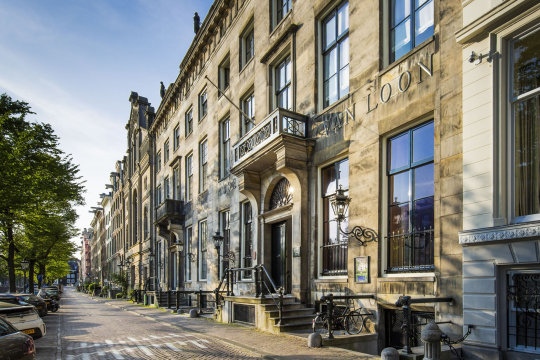
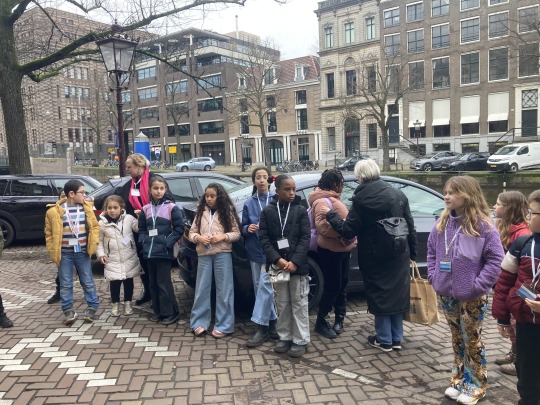
NOORDJE naar het MUSEUM VAN LOON
We gaan weer met Noordje op stap! Deze keer gaan we naar het huis van familie van Loon. Dit huis is bijna 400 jaar oud en is één van de fraaiste huizen van de stad.
De kinderen Daisy en Henk woonde in dit grachtenhuis, met een prachtige tuin en zelfs een koetshuis; daar stonden de paarden, midden in de stad! Alles is origineel en de geschiedenis van de familie biedt stof voor verhalen. Wist je dat de eerste bewoner de schilder Ferdinand Bol was. Hij was een leerling van Rembrandt! Ook bijzonder is het verhaal over het familiewapen van de familie van Loon.
In de middag is er lunch en een workshop bij Noordje waar jij jouw familiewapen gaat bedenken en ontwerpen.
Kom mee met Noordje en beleef het!
Bovenstaande was de aankondiging en na de metro, stonden we daar voor het huis van Loon.
We konden wel zien dat het een oud huis was, de stenen waren al wat donker geworden. Verder zagen we veel rijkheid, dat konden de kinderen zien aan o.a. grote lampen aan het huis.
0 notes
Text

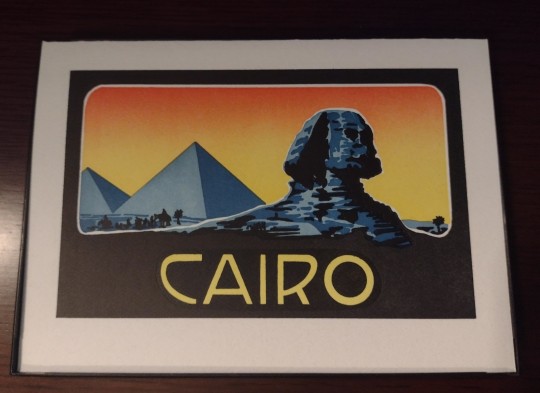
Bought these framed cards/prints in a charity shop today - recycled paper, typeset by hand, antique letterpress printing from 2003. Have since proceeded to go on a deep dive of the creators. Some of my favs I've found below.
Saturn Press
Saturn Press founded in 1986 by married couple Jane Goodrich who creates the designs and James van Pernis who runs the company's 4 antique printing presses. Based on Swan's Island off the Maine coast, this eco-conscious company helped create the bridge that saved craft printing. Using an old-fashioned letterpress technique, paper sourced from a sustainable family-run mill, and a love for what they do, Saturn Press expanded the colour palette with custom blending of each ink colour and engaging in elaborate methods rarely used by printers of the past or present.
Compiled/abridged sources:
1.https://m.facebook.com/people/Saturn-Press/100068498301968/ 2.https://www.thegoodsupply.org/collections/letterpress-cards 3.https://www.luxepaperie.com/saturnpress.html 4.https://threeredhens.blogspot.com/2008/02/surprise-visit-from-saturn-press.html?m=1
July Night
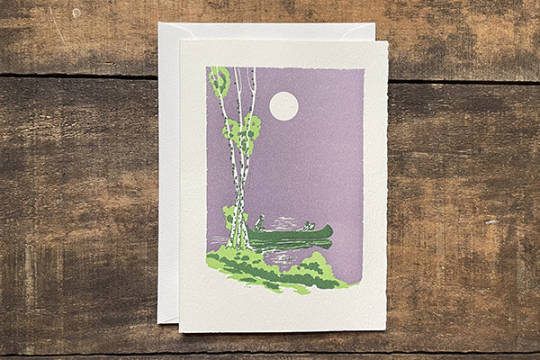
Full moon, quiet lake, a good friend, and a solid canoe sounds like a perfect evening. This letterpress card brings us along for paddle under a plum night sky. One can almost hear the dips of the oars, peeping peepers, and the occasional loon call, a Maine summer soundtrack. Let your words flow, guided by the easy current.
https://www.thegoodsupply.org/collections/letterpress-cards/products/july-night
Due South
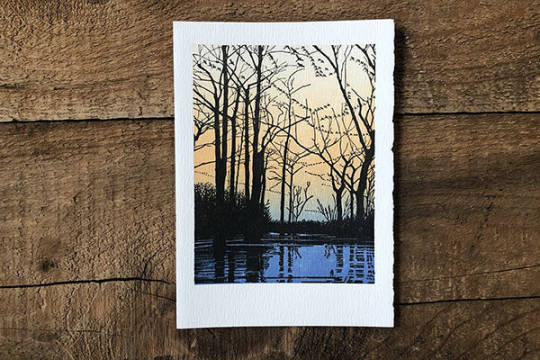
The end of Summer in Maine is often filled with mixed feelings. Truth is, seasons are what some people appreciate most in this northern clime.
This unique and vibrant letterpress card reveals some of the underlying beauty in transition as colors fade from warm to cool. A hundred geese or more are in flight -their dark silhouettes tangled with leafless branches on trees.
The image is credited to Francis Lee Jaques, a nationally-known wildlife artist who worked for over 20 years with the American Museum of Natural History in New York. Though his name is not of the household variety, his legacy has shaped America’s vision of nature for generations.
https://www.thegoodsupply.org/collections/letterpress-cards/products/due-south
Cloud Formations
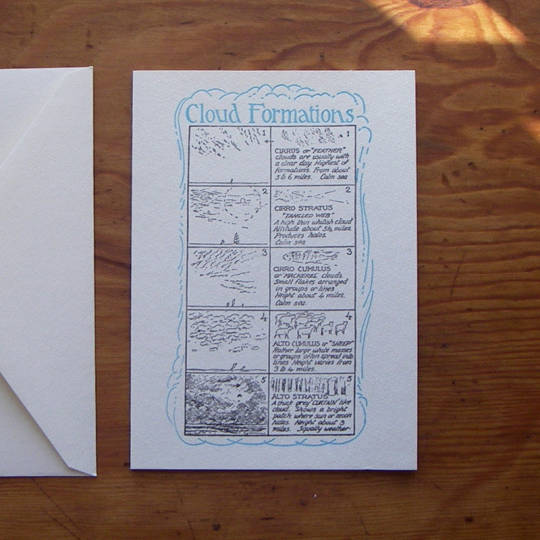
We love didactic art! Sky blue and gray imprints enlighten you with old-time nicknames and identifying characteristics of those white things overhead.
According to this illustrative chart:
Cirrus = Feather Clouds
Cirro Stratus = Tangled Web Clouds
Cirro Cumulus = Mackerel Clouds
Alto Cumulus = Sheep Clouds
Alto Stratus = Curtain Clouds
https://www.thegoodsupply.org/collections/letterpress-cards/products/letterpress-card-saturn-press-cloud-formations
Birthday Hoot! https://www.luxepaperie.com/heluhabimomg.html
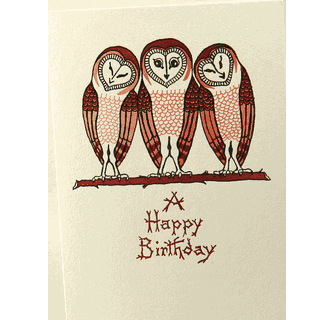
Birthday Treachery https://www.luxepaperie.com/saturnpress3.html
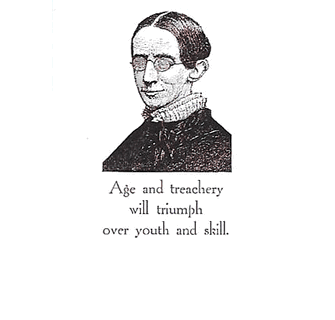
Forest Sunrise https://www.luxepaperie.com/saprfrlebigr.html
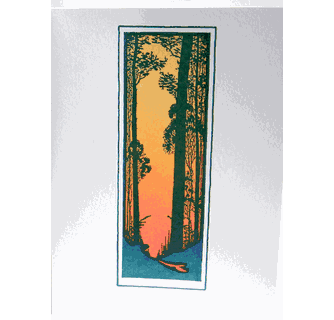
Autumn Dunes - arboriculture collection. From a 1928 illustration by Ivan Beard.
https://www.cronincards.com/autumn-dunes-box-of-8-letterpress-cards-envelopes/q

Horizon features art by J. J. Lankes circa 1932.
https://www.cronincards.com/Saturn-Press-letterpress-sympathy-cards-horizon/

#Saturn Press#letterpress#art#illustration#Jane Goodrich#James van Pernis#Maine#Swan's Island#Francis Lee Jaques#nature#clouds#owls#moon#trees#Ivan beard#JJ Lankes#grief#M#death#life
0 notes
Photo
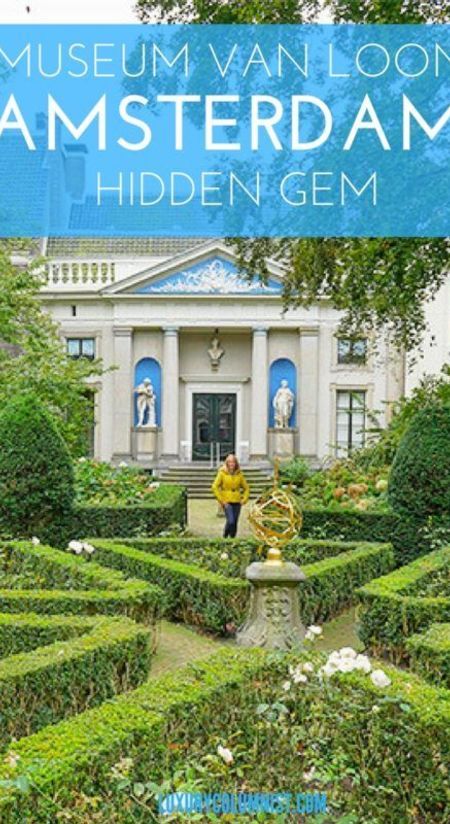
Museum Van Loon - One of the Best Hidden Gems in Amsterdam, Netherlands Discover the enchanting Museum Van Loon, a hidden gem tucked away in the heart of Amsterdam. Get ready to be amazed by its rich history and exquisite art collection.
0 notes
Photo
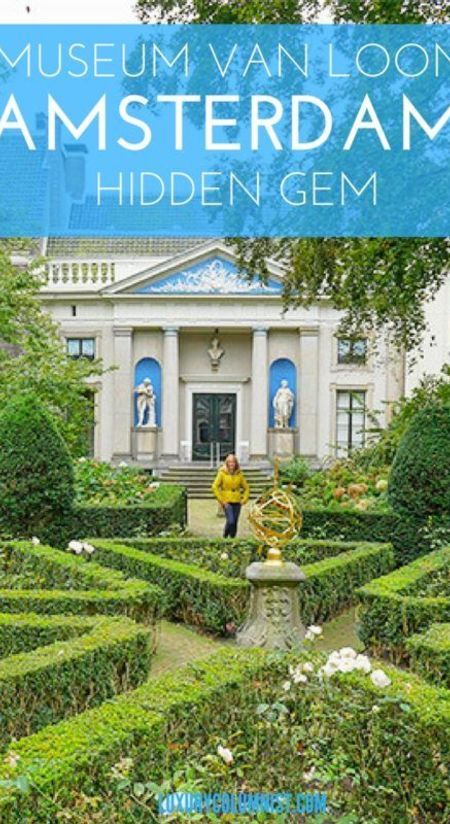
Museum Van Loon - One of the Best Hidden Gems in Amsterdam, Netherlands Calling all history buffs and art enthusiasts. Delight in the charm of Museum Van Loon, a hidden gem that holds centuries of history and breathtaking artwork. Take a stroll through its magnificent garden and let its beauty captivate you.
0 notes
Text
Gallery Spotlight: Aida Jones
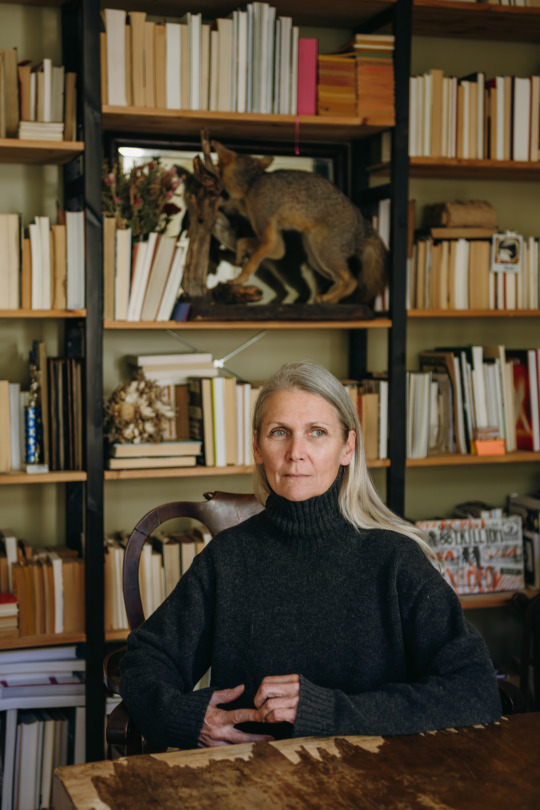
We at Studio AHEAD are excited to announce our latest exhibition, The Lily Too Shall Function, on display at The Jones Institute and the Minnesota Street Project starting November 3. As a sneak peak, we spoke this month with Aïda Jones, founder of The Jones Institute, who shared with us the history of the home gallery, a few thoughts on our show, and what San Francisco was like in the 1990s.
Studio AHEAD: The first striking thing about the Jones Institute is that it is run out of your living room. Can you share with us the history of how this came to be?
Aïda Jones: Impulse was the catalyst. An artist friend was forlorn after being rejected by a gallery and, instinctively, I responded, “I’ll have a show for you.”
It was a leap of faith where Matt Dick, Ruth Kneass, Tjarn Sato, Fletcher, Anton Stuebner, Michael Lee, Wendy Norris, Regina Tsasis, and many many others, generously helped transform my living room into The Jones Institute.
Studio AHEAD: Were there other contexts?
Aïda Jones: The home is the original gallery. We still visit homes—the Uffizi, the Louvre, the Frick—that are now museums. The Walker Art Center in Minneapolis began in TB Walker’s home in the late 19th century and in New York in the 50s, Leo Castelli converted his living room into his first gallery. The New York Times had a wonderful article about apartment galleries a few years back.
Studio AHEAD: Perhaps 500 Capp is San Francisco’s most famous example. Who were your guiding lights in setting this up?
Aïda Jones: I love the idea of shaping culture from the fringes. Of bringing a traditional and formal construct into the domestic space.
Guiding lights are everywhere. Walk out your door and you’ll find thousands of inspirations: the drunk at the wharf, everything in Chinatown, the dahlias in the park, the art in the TL, vendors in the Mission, the cook at Red’s, the amateur opera singer next door rehearsing.
Studio AHEAD: What sort of advantages does this… let’s say DIY approach… bring?
Aïda Jones: Let's not say DIY.
Studio AHEAD: Then what would you call it? Certainly the space itself affects how people view the art.
Aïda Jones: If we have to label it, maybe call it an alternative space. And you’re right, space absolutely affects how people view art. It permeates every bit of their experience. When art is in a home, the sense of place opens them up—the art itself changes the space, it’s a symbiotic relationship you won’t have within the white box. And The Jones Institute is not a commercial place so most people find communing with art is different.
Studio AHEAD: Tell us about a recent exhibition from curator Shirley Watts. Would this be a show a more mainstream gallery could put on?
Aïda Jones: Yes and no. While individually the artists from that show (Gail Wright and Megan Gafford, for example) are exhibited in mainstream galleries, the whole of Altered States would have been impossible. Where else could you sit in a backyard, listening to an audio performance of a brain dissection (Erica van Loon) after taking in Megan Gafford’s irradiated daisies and an Erin Espelie RGB video in the main gallery?
Studio AHEAD: Nowhere else! How does our show, The Lily Too Shall Function, fit into this?
Aïda Jones: The Lily Too Shall Function, being guest curated by Homan and Elena, feels very connected to our programming. First, they chose three Northern California artists among the cohort we choose to exhibit here; and second, they are working their distinct point of view within the domestic space, marrying art with how we live. Very much in our founding ethos. We also have a deep belief in sharing the artistic process, so screening a film of the artists at our satellite location in Minnesota Street Project just makes sense.
Studio AHEAD: You and Homan were speaking off-the-record about the 1990s, on which there is currently a lot of nostalgia in mainstream American culture. What elements of the 90s would you like to see transplanted into the 2020s?
Aïda Jones: This is specific to San Francisco where we are on the edge of the world. The experimentation, the casual spontaneity, the lack of preciousness and belief you could do anything.
In the 90s, I founded AvidFan, a theatre company, and when I cast two actors (who were also female) in The Zoo Story and then True West—this to the New York Times was radical, but in San Francisco, no one blinked.
It happened because of this place as it existed then. The space and freedom. The whole Bay was wide open with possibility (and low rents!). Such amazing support for artists, from studios and rehearsal spaces for musicians, filmmakers, comedians, photographers, spoken word poets, writers, hip-hop/modern/ballet dancers to performance venues and theaters (& a cowboy store on Valencia), many underground & well-known support structures like Film Arts Foundation, New Langton Arts, New College, and so many others.
For a peek into that era see the New Yorker article of the photographer Chloe Sherman’s Renegades (and then buy the book).
Studio AHEAD: What aspect of the 2020s would you have liked to see back in the 90s?
Aïda Jones: The lovely, well-kept city parks. The absence of lingerie shows in downtown bars.
Studio AHEAD: We like to end with some cultural spaces/people in Northern California you’d like to shed light on.
Aïda Jones: Aside from each and every artist I've shown?
Studio AHEAD: Yes.
Aïda Jones: Here is an incomplete list: Aimee Sioux, Reed Awakening, TamaOne, The Farm Stand Art & Music program, Stud Country Queer Line Dancing, Slash Art, For You, the Bolinas Museum, African American Cultural Center, Dancers' Group, Auntie Charlie’s, Werkshack, CCSF Film Department, Arborica, the promise of a NorCal Pacific Standard Time, Catholic Charities’ homeless family shelters, Canyon Cinema, the Bay View Newspaper, Everything the band, Albert Lee, Natural Discourse, NAID, Cushion Works, Lynette Betancur, Donald Guravich, Rachel Marino, the new extension of trails in Marin’s redwood preserve, Originals Vinyl, Li Po, Artists Television Access, CounterPulse, RCA Beach, Day Moon Bread, whatever Natasha Boas is up to, 120710 in Berkeley, Winslow House…
Studio AHEAD: Thank you!
Photos by Ekaterina Izmestieva
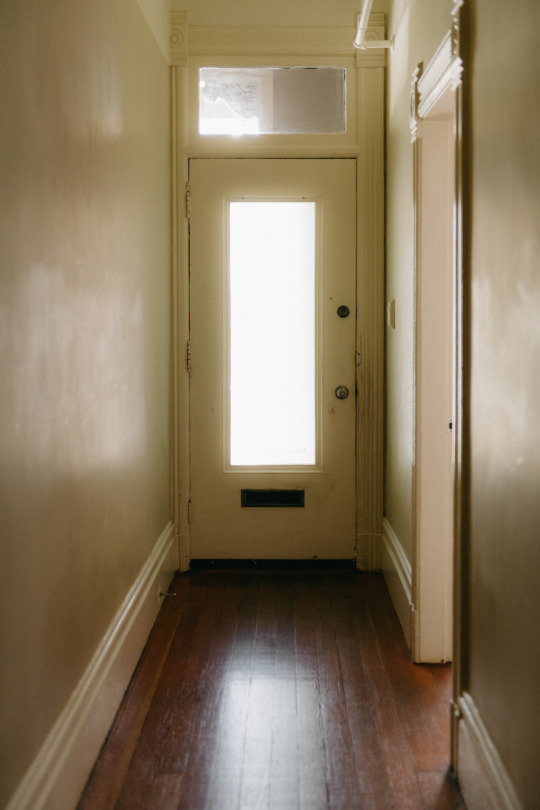

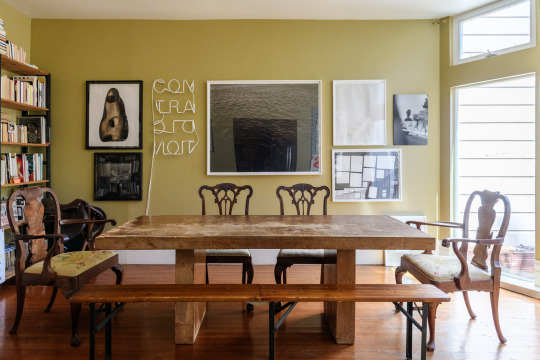



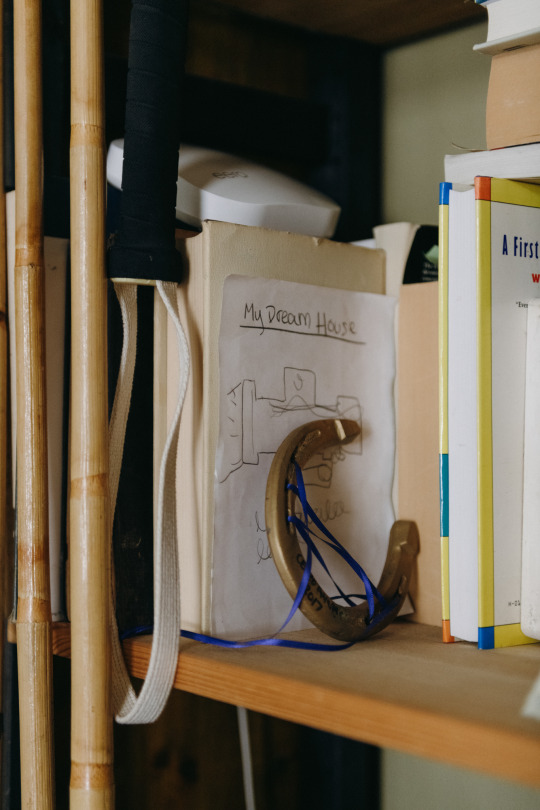


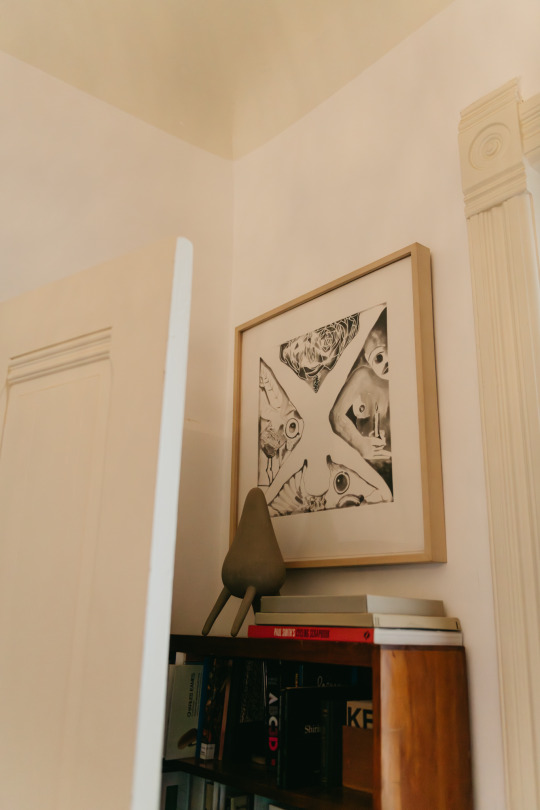
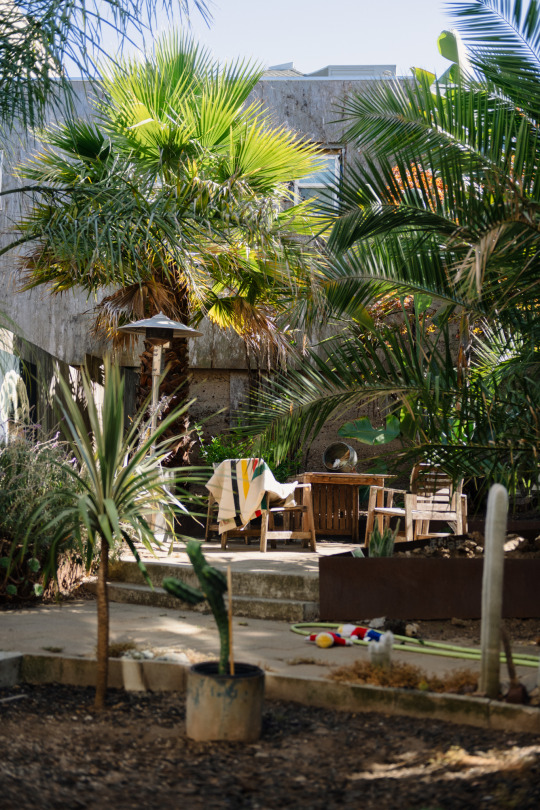
1 note
·
View note
Photo

Museum Van Loon - One of the Best Hidden Gems in Amsterdam, Netherlands Calling all history buffs and art enthusiasts. Delight in the charm of Museum Van Loon, a hidden gem that holds centuries of history and breathtaking artwork. Take a stroll through its magnificent garden and let its beauty captivate you.
0 notes
Photo
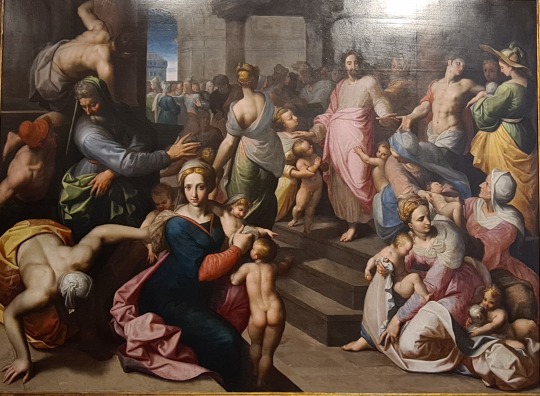
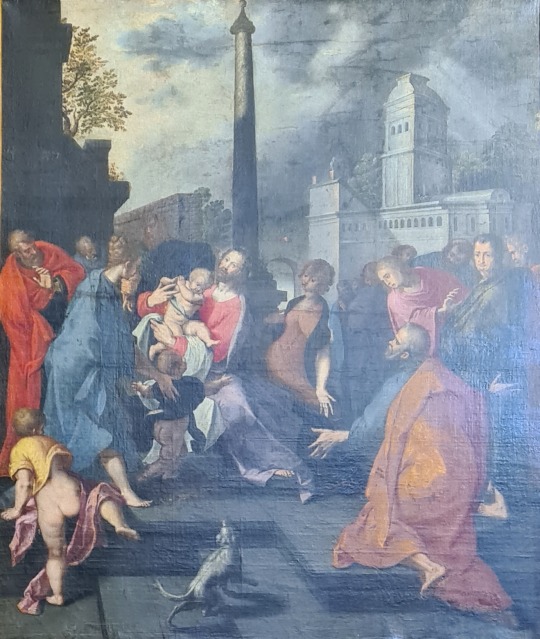
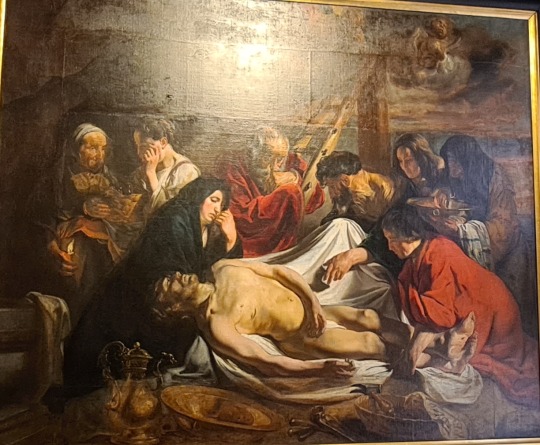

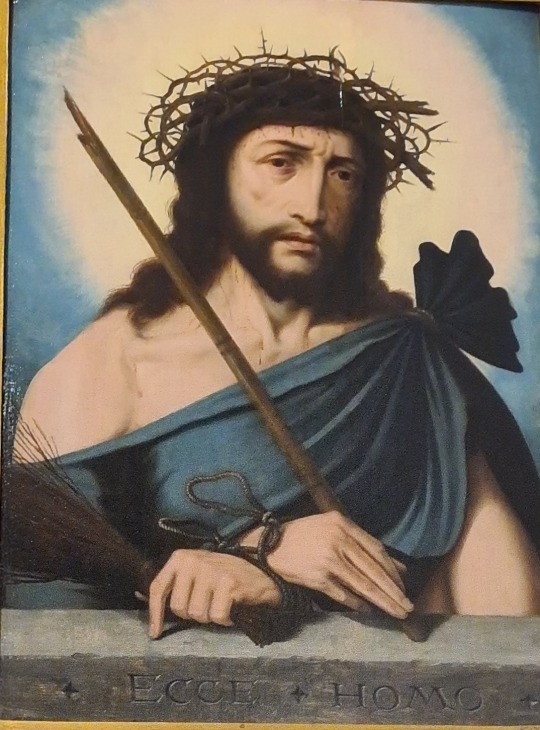
Wat? Laat de kinderen tot mij komen door Jacob de Backer (16e eeuw), Laat de kinderen tot mij komen (17e eeuw) door Maarten Pepijn, De wassing en zalving van het lichaam van Christus - De Nood Gods (1620, vergroot in 1650) door Jacob Jordaens, De Emmaüsgangers (1596-1667) door Theodoor van Loon en Ecce Homo (16e eeuw) door onbekende meester
Waar? Het Maagdenhuis, Antwerpen
Wanneer? 25 maart 2023
Het Maagdenhuis was een weeshuis voor meisjes, de ‘maegdeckens’. Het museum toont de geschiedenis van de Antwerpse weesmeisjes en de armenzorg. Daarnaast bezit het Maagdenhuis een kunstcollectie. Die bestaat grotendeels uit giften van rijke weldoeners en gaat terug tot de vroege middeleeuwen.
Tot de kunstcollectie behoren werken van onder meer Abraham Bloemaert, Peter Paul Rubens, Anthony van Dijck en Jacob Jordaens. Sommige werken zijn thematisch verbonden met het meisjesweeshuis, zoals Laat de kinderen tot mij komen van Jacob de Backer. Ik vind het een nogal merkwaardig werk. Jezus ziet er niet uit alsof hij het fijn vindt dat ze bij hem komen. Met wat moeite kan er nog net een zegenend gebaar af voor de twee kinderen die aan zijn kleed hangen. De meeste moeders zijn meer met hun kroost bezig dan dat ze het belangrijk lijken te vinden dat hun nakomelingen door Jezus worden gezegend. En om het allemaal nog vreemder te maken: alle kinderen op het schilderij zijn naakt.
Hetzelfde thema werd geschilderd door Maarten Pepijn. Het werk doet, met zijn vreemd gedraaide lichamen nogal maniëristisch aan. Het kind op Jezus schoot lijkt pogingen te doen om zich aan de armen van de Verrlosser te onttrekken. Maarten Pepijn was een tijdgenoot en vriend van Rubens. Rubens’ echtgenote was peetmoeder van één van Pepijns kinderen.
Van Jordaens vinden we in het Maagdenhuis De wassing en zalving van het lichaam van Christus - De Nood Gods, een van de fraaiere stukken in de collectie. Maria, Nicodemus en Jozef van Arimathea omringen het lichaam van Christus. Het schilderij maakte deel uit van de eigen collectie van de schilder. Na zijn dood werd het in 1678 via de Kamer der Huisarmen aan het Maagdenhuis geschonken.
Een typisch caravggistisch werk in de collectie is van de hand van Theodoor van Loon: De Emmaüsgangers. Twee leerklingen van Jezus bespreken op weg naar het dorp Emmaüs de gebeurtenissen rond Jezus’ dood. Jezus voegt zich bij de twee mannen, maar zij herkennen hem niet. Hij vraagt waar zij het over hebben. Verbaasd zegt een van hen: “Bent U dan de enige vreemdeling in Jeruzalem dat u niet weet wat daar dezegebeurd is?” Dan brengen de twee mannen verslag uit van de gebeurtenissen van de afgelopen dagen. Als ze Emmaüs naderen wil Jezus verder reizen, maar de mannen nodigen hem uit met hen mee te gaan. Als ze aan tafel aanliggen breekt Jezus het brood en spreekt de dankzegging uit. Op dat moment herkennen de mannen hem (Lucas 24:13-31). Op het schilderij staat Jezus op het punt het brood te breken. Dit brood verwijst naar het lichaam van Christus, zoals de druiven verwijzen naar zijn bloed.
Een interessant werkje van een onbekende meester is Ecce Homo, een buste van een geboeide Jezus met stok en doornenkroon. Vooral de gezichtsuitdrukking van de lijdende Christus is goed getroffen.
1 note
·
View note
Photo

Museum Van Loon Garden - Mara van Laaren , 2018
Dutch , 1977 -
Oil on canvas , 105 x 100 cm.
205 notes
·
View notes
Photo

Today’s Flickr photo with the most hits - the Museum Van Loon, Amsterdam.
5 notes
·
View notes
Photo

Museum Van Loon, Amsterdam
#art details#art detail#art history#art history details#art history detail#art#museum#museums#Museum Van Loon#Amsterdam
953 notes
·
View notes
Text

De bovenstaande foto verwijst naar de tentoonstelling die het van Loon Museum in 2020‘ heeft georganiseerd: ‘Aan de Surinaamse grachten’
Op de gang hebben wij gekeken naar een Surinaamse plantage waar de familie van Loon in investeerde. Wil je hier meer over lezen dan verwijs ik je naar deze link: https://www.museumvanloon.nl/text
In onze groep zaten 2 Noordjes kinderen met een achtergrond in Suriname, waarvan 1 kind kon vertellen dat haar verre familie uit een land uit Afrika kwam, ze wist niet precies welk land. Later zien wij haar dat verwerken in haar familiewapen.
0 notes
Photo

Footman’s uniform from Museum Van Loon, Amsterdam
26 notes
·
View notes
Text

Theodoor van Loon (1581/1582-1649) “Adoration of the Shepherds” (1620s) Oil on canvas Baroque Located in the Museum of Fine Arts, Boston, Massachusetts, United States
#paintings#art#artwork#religious painting#christmas#theodoor van loon#oil on canvas#fine art#baroque#museum of fine arts#museum#art gallery#flemish artist#new testament#birth of christ#adoration of the shepherds#angles#cherubs#male figure#baby#child#holy family#jesus mary and joseph#christianity#1620s#early 1600s#early 17th century
163 notes
·
View notes
